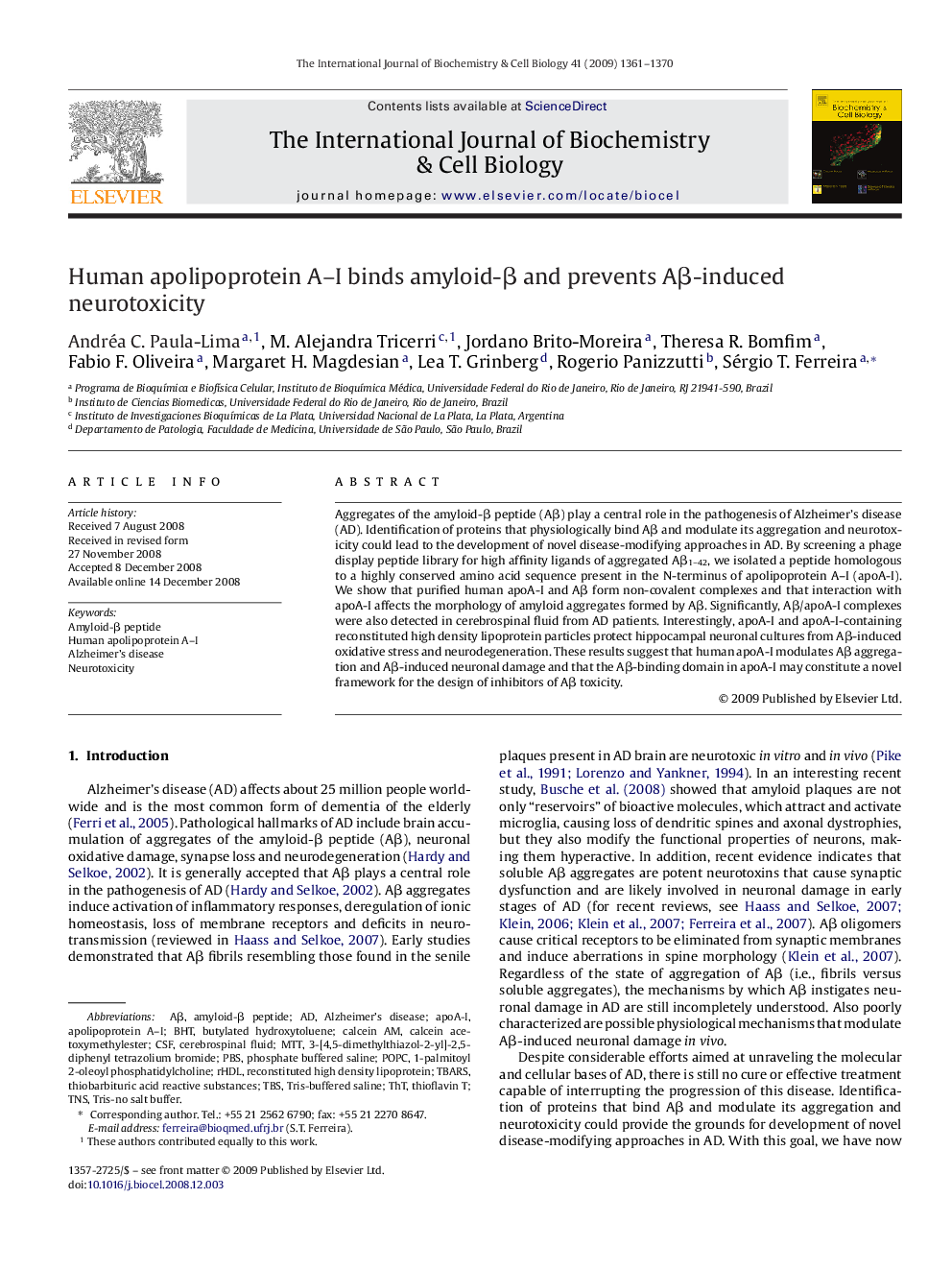| Article ID | Journal | Published Year | Pages | File Type |
|---|---|---|---|---|
| 1985042 | The International Journal of Biochemistry & Cell Biology | 2009 | 10 Pages |
Abstract
Aggregates of the amyloid-β peptide (Aβ) play a central role in the pathogenesis of Alzheimer's disease (AD). Identification of proteins that physiologically bind Aβ and modulate its aggregation and neurotoxicity could lead to the development of novel disease-modifying approaches in AD. By screening a phage display peptide library for high affinity ligands of aggregated Aβ1-42, we isolated a peptide homologous to a highly conserved amino acid sequence present in the N-terminus of apolipoprotein A-I (apoA-I). We show that purified human apoA-I and Aβ form non-covalent complexes and that interaction with apoA-I affects the morphology of amyloid aggregates formed by Aβ. Significantly, Aβ/apoA-I complexes were also detected in cerebrospinal fluid from AD patients. Interestingly, apoA-I and apoA-I-containing reconstituted high density lipoprotein particles protect hippocampal neuronal cultures from Aβ-induced oxidative stress and neurodegeneration. These results suggest that human apoA-I modulates Aβ aggregation and Aβ-induced neuronal damage and that the Aβ-binding domain in apoA-I may constitute a novel framework for the design of inhibitors of Aβ toxicity.
Keywords
PBSPoPCTNSApoA-IrHDLTBARSTBSAβcalcein acetoxymethylesterBHT3-[4,5-dimethylthiazol-2-yl]-2,5-diphenyl tetrazolium bromideMTTThTAlzheimer's diseaseTris-buffered salineThioflavin TNeurotoxicityPhosphate buffered salinereconstituted high density lipoproteinCSFCerebrospinal fluidthiobarbituric acid reactive substancesbutylated hydroxytolueneamyloid-β peptideCalcein AM
Related Topics
Life Sciences
Biochemistry, Genetics and Molecular Biology
Biochemistry
Authors
Andréa C. Paula-Lima, M. Alejandra Tricerri, Jordano Brito-Moreira, Theresa R. Bomfim, Fabio F. Oliveira, Margaret H. Magdesian, Lea T. Grinberg, Rogerio Panizzutti, Sérgio T. Ferreira,
